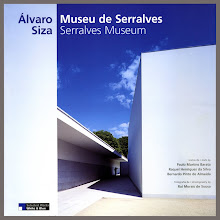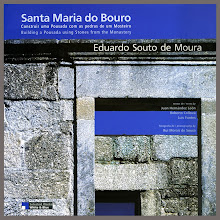..
Sadness and sorrow seem to be out of fashion these days...
So does happiness and joy...
So does pain and innocence...
Or whatever feelings we might experience, for that matter!
We are well-drilled to be cool and sophisticated...
When I started growing up, photographically speaking, I cared about feelings and emotions and I cared about the human condition.
I had big respect for people who struggled for authenticity and visual integrity in their photographic creations and in their personality.
People like Josef Koudelka and Henri Cartier-Bresson were my unquestionable heroes.
I strived to follow their paths, I wished that I could "suck" the influence of their oeuvres in my brain and blood, in my vision and character!
So it hurts a little, to see a certain highly regarded brand of equipment, holder of a long photojournalistic tradition and heritage, introducing a new camera in a very nice brochure with a "reportage" (that's their chosen word, not mine!) about a "boxer" (the inverted commas are mine!) in Cuba, that could be taken out of a high-gloss fashion magazine.
I will admit that the photographs even look nice, but I could bet that the fighter and his girl-friend came straight out of a modeling agency...
Even the old cars and houses so typical of the cuban images we got accustomed to see, seem to be washed and a little bleached, sterilised.
Yes, it all looks so clean and sophisticated... It all looks so fake!
 Minolta XM, Kodak Tri-X, Kodak D-76 1+1
Minolta XM, Kodak Tri-X, Kodak D-76 1+1
Travelling all the way up to Scotland, we came across Nene Valley Railway completely by chance.
Being an enthusiast of steam locomotives and old trains, although not a cognoscenti one!, I couldn't resist but stop and photograph for a couple of days.
So our trip took a little unplanned intermezzo, with an extra opportunity to enjoy a little nostalgia.
Time washed my faint memories away (I even started thinking that Nene Valley was in Scotland...), and very little reminisces here and now, but these simple images from my beginnings as a photography lover.
 Minolta XD-7, Ilford HP-5, Kodak D-76 1+1
Minolta XD-7, Ilford HP-5, Kodak D-76 1+1 Minolta XD-7, Ilford HP-5, Kodak D-76 1+1
Minolta XD-7, Ilford HP-5, Kodak D-76 1+1 Minolta XD-7, Ilford HP-5, Kodak D-76 1+1
Minolta XD-7, Ilford HP-5, Kodak D-76 1+1 Minolta 303b, Ilford Pan-F, Agfa Rodinal 1+50
Minolta 303b, Ilford Pan-F, Agfa Rodinal 1+50 Minolta XD-7, Ilford HP-5, Kodak D-76 1+1
Minolta XD-7, Ilford HP-5, Kodak D-76 1+1 Minolta 303b, Ilford Pan-F, Agfa Rodinal 1+50
Minolta 303b, Ilford Pan-F, Agfa Rodinal 1+50 Minolta XM, Kodak Tri-X, Kodak D-76 1+1
Minolta XM, Kodak Tri-X, Kodak D-76 1+1 Minolta XM, Kodak Tri-X, Kodak D-76 1+1
Minolta XM, Kodak Tri-X, Kodak D-76 1+1 Minolta XM, Kodak Tri-X, Kodak D-76 1+1
Minolta XM, Kodak Tri-X, Kodak D-76 1+1 Minolta XM, Kodak Tri-X, Kodak D-76 1+1
Minolta XM, Kodak Tri-X, Kodak D-76 1+1 Minolta XM, Kodak Tri-X, Kodak D-76 1+1
Minolta XM, Kodak Tri-X, Kodak D-76 1+1 Minolta XM, Ilford HP-5, Kodak D-76 1+1
Minolta XM, Ilford HP-5, Kodak D-76 1+1 Minolta XM, Kodak Tri-X, Kodak D-76 1+1
Minolta XM, Kodak Tri-X, Kodak D-76 1+1I can't recall with exactitude which lenses I owned by the time of this trip, but I only used Minolta Rokkor lenses in my Minoltas: 21mm Rokkor, 28mm Rokkor, 35mm Rokkor, 50mm Rokkor, 50mm Macro-Rokkor, 135mm Rokkor, 80-200 Zoom-Rokkor, whatever!
I found the quality in most cases to be very good, and I still regret that I didn't keep the XM camera (Minolta used different nomenclature according to the different markets, so a Minolta XM, in the european market, could be called a XK in the USA, the XD-7 was also known as the XD-11, etc.). Together with the very fine 1.8/35mm Rokkor, it made a specially pleasing combo in my opinion. I loved it!
The XM tried to compete in the professional segment with the Nikon F2 and the Canon F-1, although it was by far not so dependable in my opinion, I must add! Nevertheless, it was a very interesting camera with aperture priority automation, as well as manual mode of course, and you also could buy a (much more expensive) motorized version, the Minolta XM-Motor. It looked very nice, but I never managed to get my hands on one, so I can't speak for myself.
The SRT models were rather robust and efficient cameras (the electronic models were prone to have some occasional failures, at least my cameras did have them...).
If I remember well, the XD-7 was the first multi-mode exposure camera model on the world market that supported multiple automatism: you could choose between aperture priority or shutter priority (a hard to believe "luxus" on those days...), as well as fully metered manual mode.
A rather well balanced piece of equipment, it was developed in conjunction with Leitz/Leica, and the body served also as the basis for the Leica R4, if I am not wrong (another example of the collaboration between both companies, was the smaller Leica CL, the body beeing made by Minolta in Japan, and the lenses by Leitz in Germany. As a side note, the Leica CL was my first Leica ever!).
I also owned a Minolta SRT 101, which was a somewhat simplified version of the 303b, but, as it seems, I had left it at home and didn't bring it along in this trip (I doubt it, but it can also be the case that I bought it at a later time...).
On those days I was a big fan of the light meters made by Minolta too, and used two different models of Minolta-Autometer extensively. I still have and use the Minolta-Spotmeter M.
As I have said before, I gradually traded my Minolta equipment for Leica-M stuff, a change that greatly influenced my way of shooting, although I should further say that that change was due to the distinct characteristics of both types of camera (Single-Lens Reflex versus Rangefinder), and not necessarily due to a eventual difference in quality between both brands (that also existed...).
I hope that you enjoy these memories from my own long vanished personal past, and from a bygone era.
See you soon!
..









+copy.jpg)
+copy.jpg)
+copy.jpg)
+copy.jpg)
+copy.jpg)
+copy.jpg)